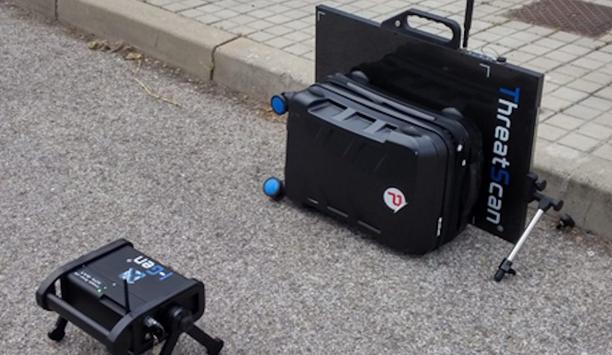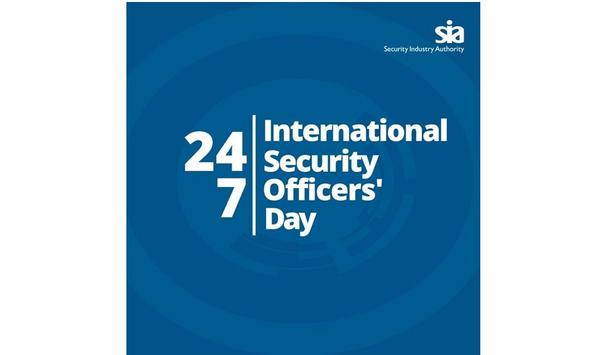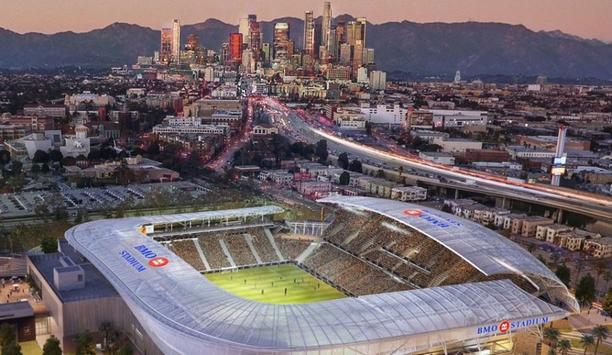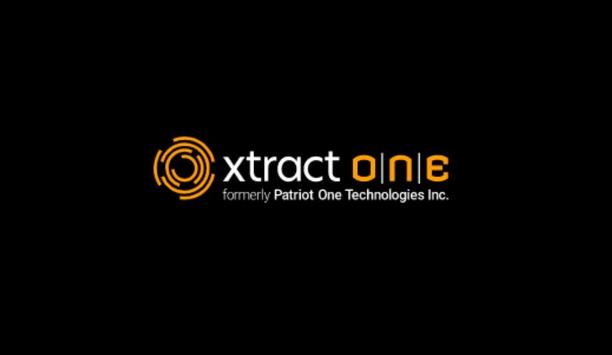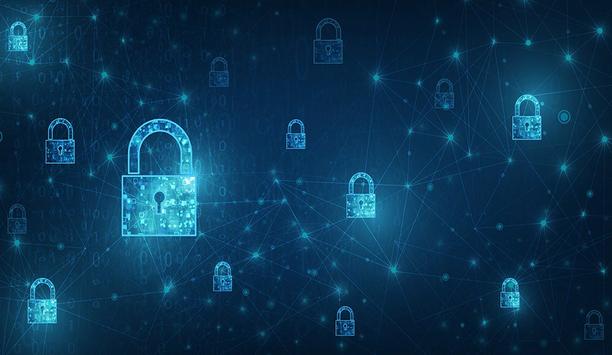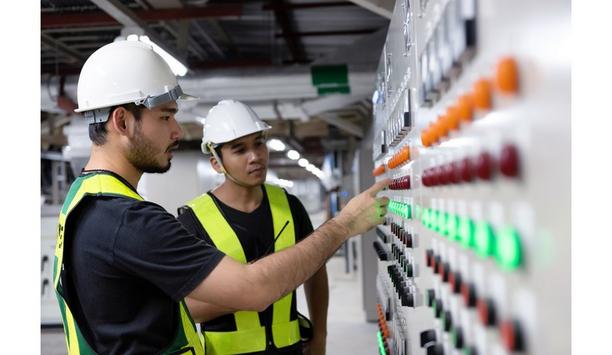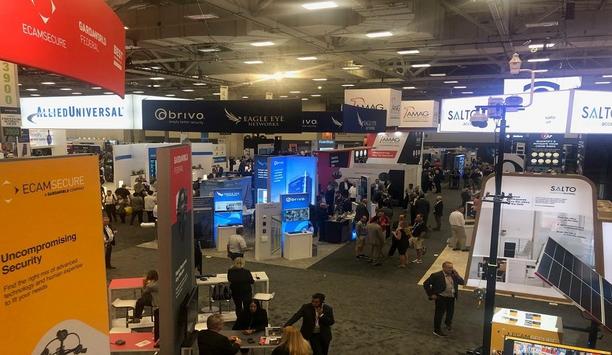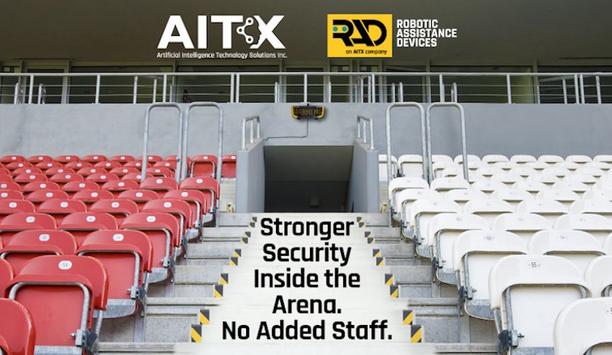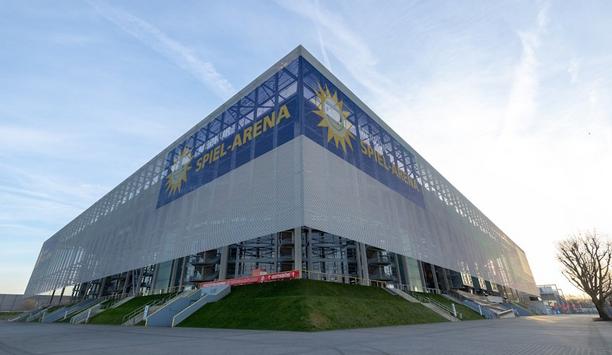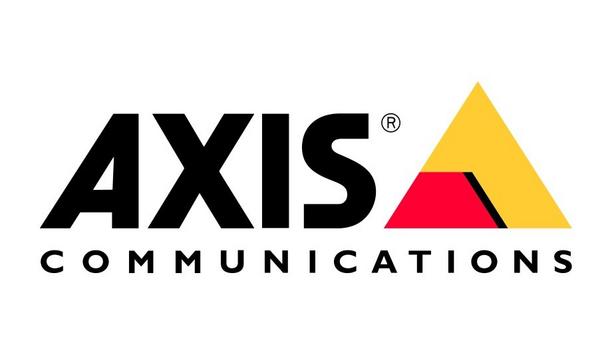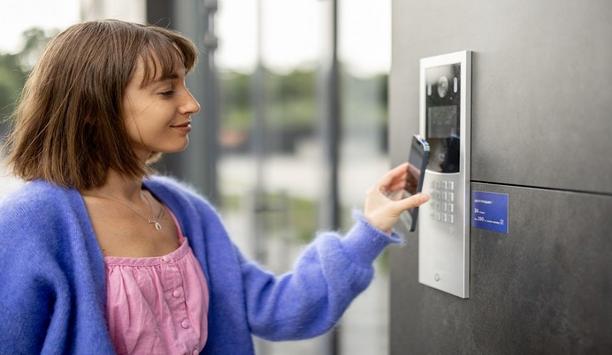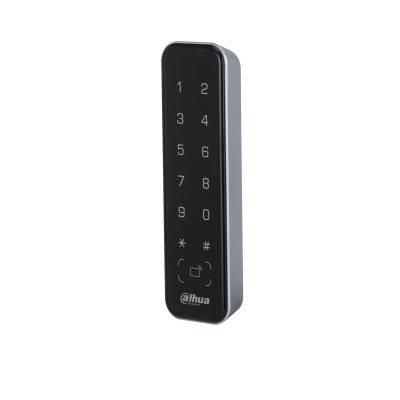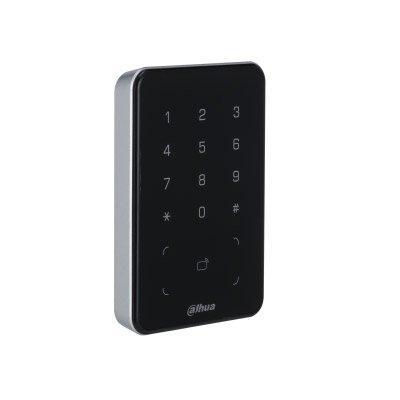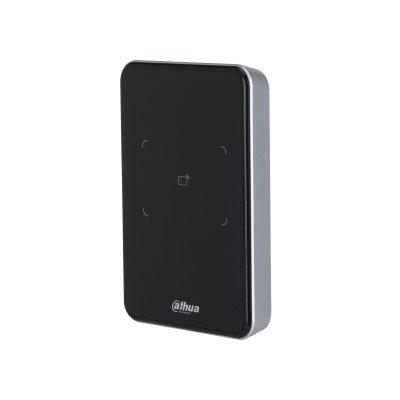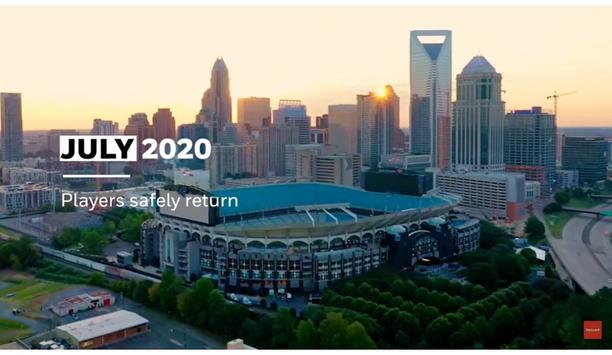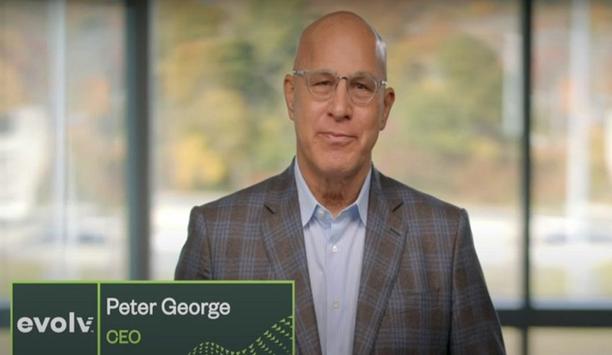Stadium security
3DX-RAY, a pioneer in advanced X-ray imaging technology, is pleased to announce the successful acquisition of a significant double-digit unit contract with the esteemed Indian partner for the ThreatScan LS1 system. This innovative solution has been selected for its impressive size, ruggedness, and exceptional capability to efficiently handle Passive Infrared (PIR) devices activated by X-ray technology. EOD and security applications The ThreatScan LS1 is an advanced X-ray imaging system specif...
barox Kommunikation AG, will be showcasing the power of their video security networking solutions and game-changing diagnostic tools, at the world famous Etihad Stadium in Manchester, as part of Commend UK’s ‘The Innovation Tour 2025’. Designed for end users, consultants and integrators in all security sectors, ‘The Innovation Tour 2025’ takes place on 12th November, between 10:00am and 4:00pm. Visitors to the event can drop in at any time to see the latest develop...
The terrorism threat in the UK is very real. In fact, since July 2019, the threat level has never dropped lower than “substantial” or “severe.” To ensure preparedness across public places and events, the UK government has introduced the new Terrorism (Protection of Premises) Act 2025, more commonly known as Martyn’s Law in memory of Martyn Hett, a victim of the 2017 Manchester Arena bombing. Overarching aim The new legislation requires operators of public spaces...
VIVOTEK (3454-TW), the pioneering security solution provider, marked its 25th anniversary with a special Family Day on September 5 at the Taipei Dome. Thousands of employees, their families, and global partners from across five continents gathered to witness the retirement game of Lin Chih-Sheng, the all-time home run pioneer in Taiwan’s professional baseball history. Next 25 years of innovation and growth VIVOTEK workers waved memorial 25th anniversary towels and joined the crowd in ho...
Increasingly, customers see access control and security systems as integral to their premises. As a result, they expect the same attention to detail and design principles they find in other building products, in both the commercial and the residential sectors. The industry needs better design thinking to meet these changing demands. ‘Product design’ of course has always encompassed more than aesthetics. An access solution’s performance and any potential ROI for adopters will b...
Building Intelligence, a provider of solutions that securely streamline vendor, vehicle, and visitor access, announces a pioneer transition to support its next phase of growth. The new pioneer structure will help the company scale operations and refine its organizational strategy to pursue new growth opportunities. Focusing on expansion Championing innovation and partnership with strategic growth and market-defining innovationFounder Jeffrey Friedman will assume the role of Chief Evange...
News
The Security Industry Authority (SIA) – the UK’s private security industry regulator is encouraging everyone to show their appreciation to security operatives on International Security Officers’ Day, which takes place annually on 24 July. This follows a reception at the House of Lords (22 July 2024) to mark 20 years of SIA licensing. The anniversary event was sponsored by Baroness Meacher, the first Chair of the SIA. Public security and safety The event was attended by SIA front-line license holders who were nominated by their peers in the private security industry for their contributions to improving standards in security and supporting public safety. Among those invited to attend were: Jamie Mcmullen, a door supervisor licence holder from Merseyside, working for Network Rail. Jamie saved a teenager with special educational needs and disabilities from serious harm after the boy left his wheelchair and fell onto the tracks at Liverpool Central Station. Jamie’s quick reactions, halting an incoming train and calling for assistance, were praised by his former employer, Carlisle Support Services. Claire Devitt, a security guarding license holder from Cumbria, intervened after spotting a distressed woman attempting to jump from a multi-story car park. Clare held onto the woman and supported her until Cumbria Police arrived. Clare was praised by her employer, Securitas, for her exceptional courage and compassion, going beyond duty to save a life. SIA licensing anniversary Heather Baily, current Chair of the SIA, said, “It is especially fitting to mark the anniversary of SIA licensing as we approach International Security Officers’ Day 2024. The date 24/7 reminds all of us about the important role of private security in protecting people and property, 24 hours a day, 7 days a week.” “The stories we have heard from the SIA front-line license holders who join us at the House of Lords are an inspiration to us all. They reflect the experiences of many others working in private security at various locations such as music concerts, sporting events, hospitals, pubs and clubs, and retail premises.” Importance of private security Michelle Russell, Chief Executive of the SIA, added, “If you encounter someone working in private security on 24/7 – please do smile, say hello and thank them. A simple greeting can go a long way in showing your appreciation to the people who work all hours, and sometimes in all weathers, to keep us safe.” On International Security Officers Day, Heather will be in London, and Michelle will be in Manchester with the City Security Council, to meet private security operatives working on the front line with the public, and in control rooms, to thank them for the important role they play.
Allied Universal®, the world’s major security and facility services provider, has been selected by BMO Stadium as its event services provider, offering comprehensive temporary staffing, consulting, and security. Allied Universal’s expertise in supporting large venues enables BMO Stadium to focus on ensuring the success of concerts and sporting events. BMO Stadium BMO Stadium in Los Angeles hosts concerts by world-renowned music artists and is home to the Los Angeles Football Club (LAFC) and Angel City Football Club. In addition, Allied Universal is actively recruiting to fill more than 500 positions to support the 22,000-seat stadium which is located south of the University of Southern California campus. Event services expertise “Allied Universal is pleased to bring our decades of expertise in event services to support BMO Stadium and the Southern California community it serves,” said Ty Richmond, President of Allied Universal Events Services. Ty Richmond adds, “In addition, we are excited to offer opportunities for members of the community to apply for event services positions which provides them with a unique opportunity to not only attend concerts and sports events but get paid to experience the excitement surrounding their favorite artists and soccer teams.” Employment opportunities “Allied Universal offers careers and long-term growth in the thriving and essential security industry,” said Steve Jones, Global Chairman and CEO of Allied Universal, adding “We have countless examples of individuals who began their career as a security professional and are in senior leadership positions today.” Global employee survey In a recent global employee survey completed by nearly a half million Allied Universal security professionals, workplace satisfaction was high among team members with the areas of “feeling respected by their leadership team” and “recommending their workplace to family and friends” coming in on top. More than 80% of employees are proud to be a member of the Allied Universal team. More than 75% are satisfied with their job and feel that Allied Universal has a positive effect on society and local communities.
Xtract One Technologies, a technology-driven threat detection and security solution that prioritizes the patron access experience by leveraging AI announced the Company will serve as the exclusive preferred supplier for the American Association of Professional Baseball (AAPB). Through this three-year partnership, Xtract One will have the unique ability to advise AAPB regarding security and weapon detection technology, deploy solutions, and ensure best practices to deliver first-class fan experiences. Streamlined and efficient security The AAPB currently has 12 teams, with significant expansion on the horizon. The league collectively welcomes over 1.9 million patrons to their baseball stadiums each year and aspires to transform their venues into dynamic entertainment hubs to deliver optimal fan experiences. This collaboration signifies a significant step forward in delivering streamlined and efficient security measures, enhancing venue safety, minimizing wait times, and fostering enhanced patron experiences across the AAPB’s entertainment centers. Gateway system This solution unobtrusively scans patrons for guns, knives, and other prohibited items using AI-powered sensors Xtract One’s Gateway system replaces traditional metal detectors and hand wands and delivers fast, reliable, and seamless patron screening. This solution unobtrusively scans patrons for guns, knives, and other prohibited items as they enter the facility, using AI-powered sensors to detect threats without invading patrons’ sense of privacy and comfort. The system was designed for large, ticketed venues to enable high throughput and a brand-enhancing patron experience. With Xtract One, AAPB will eliminate long entry lines, allowing fans to quickly, and safely, enter the venue and enjoy the event. Safe and enjoyable experience “The AAPB is all about family experiences, family fun, good times, and great memories. Our top priority is to enhance these experiences and to continue expanding our offerings,” said Joshua Schaub, Commissioner of the American Association of Professional Baseball. “We are delighted to partner with Xtract One on this journey to deliver an even safer and more enjoyable experience for all.” Weapon detection technology solution Xtract One’s ability to bolster security measures while ensuring an optimized entry process for patrons In its exclusive role, Xtract One will work closely with AAPB to deploy cutting-edge security and weapon detection technology solutions tailored to the league’s needs and dynamic, family-centric venues. Xtract One’s ability to bolster security measures while ensuring an optimized entry process for patrons aligns with the league’s mission of prioritizing safety without compromising the fan experience. Enhance patient safety “We are thrilled to be partnering with AAPB as their exclusive preferred supplier. We look forward to helping enhance the overall safety for guests at upcoming games while elevating their game-day experience to a whole new level,” said Peter Evans, CEO of Xtract One. “Together with AAPB, we are pleased to be contributing to the vibrant, enjoyable experiences AAPB provides to fans and families.”
From 10 to 13 October, the global airport community will gather for the 24th edition of inter airport Europe at the Munich Trade Fair Centre in Germany. The event returns with an impressive line-up of well over 400 airport suppliers from 37 countries, including seven national pavilions and more than 100 new exhibitors. Live exhibits Visitors can look forward to plenty of live exhibits in the halls and Outdoor Area and a new 600 square meter GSE Experience Area. An exciting event program including Technical Seminars, Innovation Awards, and the co-located inter airport FOCUS, The Sustainability Summit provides interesting opportunities to further engage with new technologies and suppliers, all dedicated to improving airport performance while delivering a return on investment. New economic importance inter airport Europe has developed into the most senior gathering of global airport operators, airlines, CAAs, service suppliers The Munich Trade Fair Centre will once again turn into the world’s biggest hub for exploring and sourcing new technology, equipment, and services for better airports. Over nearly 50 years, inter airport Europe has developed into the most senior gathering of global airport operators, airlines, CAAs, service suppliers, investors, and other experts in this sector. The upcoming event marks another milestone for the airport industry which is currently rising to new economic importance with a multitude of opportunities and challenges. Airport professionals Airport professionals from more than 100 countries have already registered as visitors, including key representatives from AENA, Air France, Deutsche Lufthansa, Fraport AG, Heathrow Airport, İGA Istanbul Airport, Oman Airports, Shell Aviation, WISAG, and many more. Over four exhibition days, they can explore an excellent cross-section of technologies and services for the entire airport supply chain, including airside operations, terminal management, passenger services, baggage handling, safety and security, airport IT, air traffic control, airport maintenance, and environmental management. Insights into technology innovations Networking and knowledge platform on how to develop, embed, and integrate sustainability strategies An impressive program of accompanying events offers additional insights into technology innovations about wider market trends. These include Technical Seminars, Innovation Insight Sessions, the prestigious Innovation Awards, and the co-located inter airport FOCUS Sustainability Summit, a two-day, high-profile networking and knowledge platform on how to develop, embed, and integrate sustainability strategies into every aspect of airport life. Roadmap to airport operations “Co-locating exhibition and summit is an exciting opportunity for us to provide more value to the global airport community. Both events naturally complement each other, providing attendees with a great roadmap to future-proof their airport operations,” says Olaf Freier, Portfolio Director Transport of inter airport Europe, on behalf of show organizer RX. “The co-location offers new and encouraging perspectives that will help pave the way for innovation, resilience, and sustainability at future airports.” inter airport Europe at a glance: Indoor and outdoor stands with live equipment Over 30% of exhibitors are newcomers on the inter airport show floor, forming an impressive line-up A large show floor in halls B5, and B6, and the adjacent outdoor area invite visitors to discover more than 400 suppliers who deliver advanced airport equipment, technology, and services across the globe. The top five exhibitor countries are Germany, Italy, the United Kingdom, France, and the Netherlands, with 37 countries represented in total. Over 30% of exhibitors are newcomers on the inter airport show floor, forming an impressive line-up of well-known international brands alongside promising startups and scaleups. A new 600 square meter GSE Experience Area, sponsored by Weihai Guangtai Airport Equipment, will offer visitors the opportunity to see the latest equipment for aprons and runways live and in action. National Pavilions and First-time Exhibitors Several National Pavilions will feature this year – Italy, France, the UK, the Netherlands, Finland, and newcomer Spain, all showcasing some of their countries’ finest tech companies and products. Long-term show partner GATE (The Airport Technology Network) will be hosting a number of its members at their dedicated GATE Pavilion again. In addition, there will be two First-time Exhibitor pavilions specifically dedicated to companies new to inter airport Europe. Opening and Innovations Awards Ceremony The spotlight on best practices, technologies, and partnerships that drive innovation and excellence The inter airport Europe Innovation Awards celebrate the achievements of the many inventors and technical pioneers within the exhibitor community, putting the spotlight on best practices, technologies, and partnerships that drive innovation and excellence for better airports. The winners will be announced at the Opening and Innovation Awards Ceremony on Tuesday, 10th October, 11:00 - 12:00, at the Seminar Theatre in Hall B5. Welcoming presentations include speeches from Nicola Hamann, Managing Director at RX, Kay Bärenfänger, President at GATE Alliance, and Jost Lammers, CEO at Munich Airport. Seminar Programme: Three days of expert talks The free-to-attend inter airport Europe Seminar features a selection of technical talks on pioneering solutions and approaches to pressing airport issues, including the Innovation Insight Sessions featuring participants of the Innovation Awards. The 15-to-30-minute sessions will touch on key aspects of the passenger experience and passenger journey, baggage handling, security systems, as well as ramp and terminal management. The technical seminars will run between 10 - 12 October at the Seminar Theatre in Hall B5, stand B5-1580. Visit the show website for the full seminar agenda. inter airport FOCUS – The Sustainability Summit The Sustainability Summit offers two days of top-tier education, networking, and collaboration opportunities The co-located inter airport FOCUS – The Sustainability Summit offers two days of top-tier education, networking, and collaboration opportunities for aviation stakeholders looking to develop, discuss, or initiate sustainability measures required to reach their net zero commitments, including sustainable airport operations, net-zero infrastructure, and new mobility concepts. inter airport FOCUS takes place on 11 and 12 October at the Press Centre East Entrance (Rooms 1A, 1B, 2). The Summit tickets can be purchased online or on-site and also include free entry to the inter airport Europe exhibition and seminars. For the full summit program, please visit inter airport FOCUS. Visitor tools, Matchmaking Visitors are invited to use the Exhibitor List Tool and Online Show Preview to search for products and companies that are of particular interest to them. Once registered, visitors have access to the inter airport Europe Matchmaking Platform, allowing them to send or receive meeting invitations based on their business requirements. Meetings can be arranged at the exhibitor’s stand or in the dedicated meeting lounge in Hall B6, stand B6-590. Hosted Buyer Programme The Hosted Buyer Programme offers a tailored networking experience with industry pioneers The Hosted Buyer Programme offers a tailored networking experience with industry pioneers from airfield construction, ground handling, ground support equipment, interior design, hardware and software solutions, terminal infrastructure, and operations in the 2023 group. It focuses on growing markets and emerging regions, with buyers from UAE, India, Kenya, South Africa, Saudi Arabia, and Ghana, and it is an excellent opportunity to open up new markets for exhibitors. Venue, tickets, and opening times inter airport Europe 2023, the 24th International Exhibition for Airport Equipment, Technology, Design, and Services, takes place in halls B5, B6, and the adjacent outdoor area at the Munich Trade Fair Centre in Germany. Access to the exhibition halls is via Entrance East. Please visit the Online Travel Hub for further information on transport, accommodation, and visa. Show opening hours are from 9:00 AM to 5:00 PM on Tuesday, Wednesday, and Thursday (10 to 12 October), and from 9:00 AM to 3:00 PM on Friday (13 October). Visitors can register via the Online Ticket Shop and benefit from a reduced price when purchasing their ticket in advance. Day tickets cost €42 online or €52 on-site; season tickets cost €62 online or €72 on-site.
ISS (Intelligent Security Systems), a global provider of video intelligence and data awareness solutions, announced that industry veterans Dennis Connor and Jason Lloyd have joined the company as its new Director of Program Management NA and Regional Business Manager for the Midwest respectively. Dennis Connor's responsibilities Connor, who most recently served as Program/Project Manager for CX (customer experience) Initiatives at ADT, will spearhead the development of new end-user and partner deployment methodologies for ISS. He will simultaneously work with the company’s sales, engineering, manufacturing, and R&D teams to create and foster other customer engagement programs. Work experience Connor has an extensive background in similar initiatives throughout his time in the security industry, beginning in the early 2000s as Program Manager, Returns and Repairs Operations, at Tyco International. He would go on to work at the company in various leadership positions for the next 14 years, overseeing its transition from a Bermuda-domiciled organization with a U.S. headquarters in New Jersey to being a Swiss-based company. AI-powered video analytics ISS is in a tremendous position to take advantage of the third wave of video surveillance innovation" “As the preeminent developer of AI-powered video analytics globally, ISS is in a tremendous position to take advantage of the third wave of video surveillance innovation the industry currently finds itself in,” said Connor. “I have a lot of operational experience to bring to the table and ISS, in a sense, represents just a larger version of what I have gone through in the past establishing program management initiatives at other firms.” Jason Lloyd's responsibilities Lloyd, who most recently served as Regional Sales Manager at Vicon, will be responsible for driving the sales and business development efforts for ISS across the Midwest. Prior to Vicon, Lloyd headed up a low-voltage division at ADT for just over a decade. High-trust video intelligence solutions My goal is to exceed customer expectations and demonstrate how they can leverage our neural network technology" “Being laser-focused on customer service and providing high-trust video intelligence solutions that are solving actual security and business challenges today was one of the factors that most appealed to me about ISS,” said Lloyd. “My goal is to exceed customer expectations and demonstrate how they can leverage our industry-pioneering neural network technology to keep their businesses safe.” Matt comments “ISS is experiencing incredible growth, not only in North America, but globally, and bringing in experienced team members will be critical to our continued growth,” explained Matt Powell, Managing Director for North America at ISS. “With Jason, we gain a well-respected face, and voice of our partners, in the Midwest. And in Dennis, we gain an experienced program manager who will ensure that we speak the language of success to our integration partners and customers alike." Integration in the value chain The experience of both Jason and Dennis shows that we are dedicated to a new approach to the North American market" "Solution creators must strive to do a better job of speaking ‘integration’ to our integrators, pulling them into the value chain instead of pushing them out." "That begins with the relationships we build and our value propositions to our partners and customers. The experience of both Jason and Dennis show that we are dedicated to a new approach to the North American market and continued growth of ISS.” Education Connor, who has a degree in industrial engineering from Virginia Polytechnic Institute and State University and is also Six Sigma/Lean DMAIC Master Black Belt and Scrum Master certified, resides in Orlando. Lloyd, PSP, PMP, who is based in Chicago and holds Lenel Master and Genetec certifications.
Fast-expanding First Response Group (FRG), the nationwide security, risk and property protection business, has strengthened its foothold in the events and stadia security management sector with the acquisition of Wembley-based ISC. The acquisition, which was completed this week, is part of the group’s strategy of diversification, while underpinning its strategic expansion into stadia, arena and the leisure crowd-safety sector. According to the group’s CEO, Simon Alderson, the acquisition of ISC is an important step for the business as it broadens its portfolio and geographic footprint. Stadia security management ISC was founded in 2003 by Pat Carr and enjoys a robust reputation in stadia security management ISC was founded in 2003 by Pat Carr and enjoys a robust reputation in stadia security management. It employs more than 800 security officers, all of whom will be brought under the FRG brand. ISC brings with it a track record of more than 500 events, including two UEFA Champions League finals and provided all areas of security at Wembley Stadium for bands such as Take That and Coldplay. The company also ensured high-level tunnel and back-stage security when Wembley hosted Indian Prime Minister Narendra Modi and former Prime Minister David Cameron attended by more than 60,000 spectators. Author's quote Comments Simon Alderson: “For the past 20 years, ISC has enjoyed a great reputation within the industry for developing its people and embodies the exacting standards we ourselves set as a group, so it was a perfect match for us. As we extend our national reach and our range of security offerings, it’s important for us to identify trusted companies like ISC that have the resources and agility we need to meet our customers’ most demanding requirements. For this reason, it made perfect sense to bring ISC into the FRG fold once the opportunity arose." “As an accredited, nationwide stadium security company we have responsive and adaptable resources to provide for the most complex of events. Bringing in the skills, and experience of ISC will allow us to provide even greater flexibility and peace of mind for our customers.” National Security Inspectorate (NSI) Guarding We are very much looking forward to being part of an expanding national group" Nabeela Bhutta, director at ISC, said: “We have long admired FRG, and the way in which it operates as a business. As a National Security Inspectorate (NSI) Guarding Gold-certified company, raising standards within our industry has been of great importance to us. It has been vital that we develop our most valuable resources, our people, and in doing so, enable them to help shape the delivery of our services, rather than just supplying off-the-shelf solutions." “We knew that FRG holds to the same principles, and we are very much looking forward to being part of an expanding national group, and excited for the benefits this will bring.” Business Excellence Awards FRG, who is a finalist in this year’s British Business Excellence Awards in the Growth Business of the Year category, employs more than 2,000 people and is forecasting revenue above £75m this year. The group also received a Living Wage Foundation Recognized Service Provider Champion Award in recognition of its commitment to ending in-work poverty and developing career pathways across the security industry.


Expert commentary
The average business owner or investor has some kind of security precaution in place, especially in the after-hours when there are fewer deterrents to inhibit criminal activity. Security guards, video surveillance systems, motion sensor lights, or even just fake cameras placed around the property are some of the common options people choose. Future of overnight security Smart business owners are starting to realize, however, that some of these traditional security measures are becoming antiquated and no longer cutting. The now and future of overnight security is in remote guarding. Pioneered by companies like Los Angeles-based Elite Interactive Solutions, which was founded back in 2007, remote guarding is revolutionizing the overnight security business. Minimizing criminal activity Remote guarding is fast becoming the most popular choice among commercial end-user property owners Remote guarding utilizes a combination of cutting-edge technology, “digital guards,” highly trained security agents, and local law enforcement if and when necessary to minimize the potential of criminal activity. For those adequately enlightened to its overwhelmingly impressive crime prevention capabilities, remote guarding is fast becoming the most popular choice among commercial end-user property owners to secure and protect their investments. What Is Remote Guarding? Remote guarding is a revolutionary concept and increasing trend in security systems that utilize a combination of methods to effectively analyze potential threats to property. Cameras and/or other monitoring devices running highly advanced algorithmic software are installed in strategic areas or vulnerable places onsite and remotely located security agents are immediately notified of any activity within a designated perimeter of the property. A blend of AI, cybersecurity, and video analytics When properly deployed by an expert provider, the technology stack includes a proprietary blend of video analytics, artificial intelligence, cybersecurity, and more. Done right, “noise” is effectively filtered out, allowing agents to act on legitimate alerts and achieve zero false alarms communicated to first responders. Today, there are a lot of terms and descriptions tossed around about remote guarding, remote video, virtual guarding, etc., but those attributes must be present to represent the true definition of the offering and its many virtues. Realtime situational awareness Many systems have a two-way speaker that allows the security agent to give a verbal warning When specially trained security agents are alerted to trespassers, possible intruders, or other suspicious activity, they analyze the situation in real time and determine the necessary level of action. Many systems have a two-way speaker that allows the security agent to give a verbal warning, known as a voice-down, to the individual(s) that they are being watched. Most perpetrators, often believing the response is emanating directly from security personnel on the property itself rather than from a remote command center, flee immediately. However, if the threat persists, the security agent enlists local law enforcement to get on the scene. Customized remote guarding When properly deployed, remote guarding systems are also customized to specific properties. A team of consultants visits the client’s property to evaluate its vulnerabilities and where to best place cameras and/or other monitoring devices for system efficacy. Traditional Security Shortfalls According to Keith Bushey, a retired commander for the Los Angeles Police Department, there is much frustration between law enforcement officers and potential victims of crime due to the historically unreliable performance of traditional burglar alarm systems and central monitoring stations. He states about 90% of security-related calls are false alarms, a problem that has been well-documented through the years. Onsite challenges When a legitimate emergency does occur, the perpetrators have often already done their damage When a legitimate emergency does occur, the perpetrators have often already done their damage and/or escaped by the time law enforcement arrives. Onsite security guards are not the remedy either as they bring their own set of issues and challenges. Unexpected costs Traditional security systems can also have unexpected costs. The cost is not only in the security guards’ paycheck or the cost of the equipment itself. The cost comes when an actual incident occurs. In worst-case scenarios, the security guard(s) are injured, the business suffers inventory loss, and/or damage is sustained to the property. The medical and other costs for the security guard(s), the loss of inventory, property damage, deployment of law enforcement resources, and possible fallout of legal expenses all add up. Even in the best-case scenario, false alarm expenses incur if law enforcement is dispatched. These, among many others, are some of the primary issues that remote guarding resoundingly answers as a superior alternative. A Bounty of Benefits Remote guarding systems have been proven to cut costs and be more effective than traditional security systems. Even though the monthly monitoring costs of remote guarding are significantly higher than traditional intrusion detection system monitoring, the much higher effectiveness in crime reduction, elimination of false alarms, and augmenting or replacement of manned guards result in a substantially higher return on investment (ROI) to the end user. Easy tracking of threats The security cameras already have their image captured on record, making them easier to track down For example, case studies have demonstrated reduced security costs for clients by 60%, on average. These reductions have come from the costs of security staff, inventory, or property loss, plus saving money on insurance premiums and deductibles. The nature of remote guarding reduces the risk and costs of false alarms, with professional security agents able to determine an actual threat before law enforcement is called. In a rare instance when a perpetrator escapes before law enforcement arrives or can detain the individual(s), the security cameras already have their image captured on record, making them easier to track down and identify. Reduction of false alarms The significant reduction in false alarms is greatly appreciated by law enforcement, as it allows them to focus on real emergencies or crises. Better relationships are also developed between clients and law enforcement, as remote guarding systems are highly reliable in providing accurate and real-time information to officers as they approach the scene. In short, it assists law enforcement in doing their job more effectively, as well as more safely thanks to having eyewitness information before engaging in an active crime scene. Partnership When you combine the decreased cost with the increased efficiency and success rate, it is easy to see why many commercial end-user property owners across the country are making the shift to remote guarding. It’s also an outstanding opportunity for professional security dealers and integrators to partner with a remote guarding services provider to bring a superior solution to their end customers and pick up a recurring monthly revenue stream in the process.
It’s no secret that the data security sector is constantly changing. It has an annual CGR of about 12.3%. Future trends in data security Much of this has to do with the rise of cybercrime in recent years, with reports showing that cyberattacks happen as often as every 39 seconds. To combat the growing rate of cybercrime, data security has been on the rise. As we journey further into this era, it becomes evident that a spectrum of significant trends is molding the future of data security. This exploration delves into a selection of these trends, unraveling their importance and the potential implications they carry 1. AI security tools will increase Artificial Intelligence is also being used in the development of smart attacks and malware The introduction of Artificial Intelligence in the data security industry brought significant changes, especially in cybersecurity. AI has been the golden standard for face detection, natural language processing, automated threat detection, and automated security systems. Additionally, Artificial Intelligence is also being used in the development of smart attacks and malware, bypassing even the latest security protocols in data control. And as time progresses, AI security tools will flourish and dominate the scene. Let’s take a more in-depth look at three of the top AI security tools. Targeted attack analysis tool Manufacturers utilize targeted attack analysis tools to uncover targeted and stealthy attacks. Artificial Intelligence can be applied to the program’s capabilities, processes, and knowledge. For instance, Symantec launched this tool to combat the Dragon 2.0 attack in 2022. The phishing attack reprimanded multiple energy companies while trying to gain access to their operational networks. Targeted Attack Analysis Tools can analyze incidents and look for similarities from previous situations. They also help detect suspicious activities and collect all the necessary data to determine whether a specific action is malicious. Intercept X tool Results from the Intercept X Tool feature high accuracy and a low false positive rate Sophos, a British security hardware and software company, launched the Intercept X Tool. It engages a neural network that records and analyses data like a human brain. Sophos’ Intercept X Tool can extract features from a single file and perform a deep analysis. It detects malicious activities within 20 milliseconds. Plus, it’s also trained to work on bi-directional sharing and real-world feedback of threat intelligence. Results from the Intercept X Tool feature high accuracy and a low false positive rate. IBM Watson Technology IBM’s QRadar Advisor uses IBM Watson Technology, a unique AI tool for fighting cyber attacks. Artificial Intelligence can auto-investigate activities and indicators for potential exploitation or compromise. With cognitive reasoning, IBM Watson Technology can present critical insights to accelerate the response cycle. Security analysts can utilize this technology to search for threat incidents, reducing the risk of letting them fly under the radar. 2. Blockchain as a security solution It guarantees no points of failure or hackable entrances that can expose datasets inside the system Blockchain is a type of distributed ledger technology (DLT) that aims to establish trust within an untrusting ecosystem. Today it’s one of the most robust cybersecurity technologies in the industry. Blockchain utilizes a decentralized ledger system, but your team members can still gain access to transparent information in the cloud. Members can also record, pass along, and view necessary transactional data in the blockchain. The entire blockchain process maintains data integrity within the system while establishing trust among team members. It guarantees no points of failure or hackable entrances that can expose datasets inside the system. Cybersecurity, biometrics Cybersecurity primarily benefits from these features because blockchain can create a secure and robust wall between data and hackers. On top of that, blockchain ledgers can include biometrics like fingerprints and retina scans. These prevent hackers from accessing any private data. Because blockchain is decentralized, it also limits hackable data. Together with the technology’s record-keeping system, each node is provided insight into data manipulation exposing real-time cybercrime attempts. 3. Increased and widened access control Without access control, expect your company to be open to security issues, including theft, data loss, and breach of data Access control is critical in data security. More than a valuable security tool, business leaders can use access control to regulate people accessing any given resource. A company with an IT security setting can control who has the liberty to edit certain files. One of the primary goals of access control is to minimize threats or attacks to organizations and businesses to keep people and data secure. Without access control, expect your company to be open to security issues, including theft, data loss, and breach of data protection laws. Benefits The benefits of increased and widened access control include: Identifying who can access and control your data at specific time intervals. Protecting data from overwriting, accidental deletion, and malicious intent. User permissions that can be readily changed. Compliance and regulation with data privacy laws. Central management of access to data through a reporting portal or a dashboard. Multi-factor authentication Access control comes in various types and systems, so it’s critical to know the features of what you’re looking for. The most common type is multi-factor authentication or MFA. It involves multiple steps before logging in, requiring the user to enter other relevant information besides the password. Some other examples of information include biometrics, answering a security question, or entering a code sent to the user’s email address. Two-factor authentication, role-based access control Two-factor authentication further prevents unauthorized entries that can result in unnecessary data possession Two-factor authentication further prevents unauthorized entries that can result in unnecessary data possession. Another type of access control is role-based access control. In this setup, only one individual can set up access guidelines and grant permissions to specific team members within an organization. 4. Greater use of the zero-trust security model The zero-trust security model is a framework that requires every user within and outside the organization to undergo authentication, authorization, and validation. These are all essential to ensure proper security configuration before access is granted to the company’s applications and data. A zero-trust model assumes that anyone can cause data breaches and that a traditional network edge is not taken into effect. Moreover, it addresses the following modern-day challenges: Hybrid cloud environments. Security of remote workers. Ransomware threats. This framework utilizes the combination of multiple advanced technologies, including: A risk-based multi-factor authentication. Endpoint security. Identity protection. Cloud workload technology. The zero-trust model uses all these innovative tools for system identification, user verification, access consideration, and system security maintenance. Constant validation and monitoring Enforcing strict policies and compliance with data privacy laws are also essential Additionally, it also considers data encryption, email security, and asset verification before establishing connections with applications. The architecture of a zero-trust framework requires constant validation and monitoring of the users and the devices they are using. Enforcing strict policies and compliance with data privacy laws are also essential. More importantly, the zero trust architecture requires all organizations to be aware of all their available services and accounts to gain complete control of data handling and manipulation. 5. Increased privacy regulations Privacy regulations and policies guide organizations in proper data control, handling, and security. These policies guide organizations in proper data control, handling, and security. As a responsible business owner, you must comply with these regulations to avoid legal issues. With cybersecurity attacks becoming common, expect increased and stricter privacy regulations to be released in the next few years. While current policies are still taken into effect, various modifications and adjustments will occur to compete with the rising numbers of data breaches, thefts, data loss, and more. California Privacy Rights Act (CPRA) Currently, the California Privacy Rights Act (CPRA) is the most comprehensive legislation on state data privacy. It only started to take effect on January 1, 2023. The CPRA introduces the following principles: Broad individual consumer rights. Significant duties of people who need to collect sensitive and personal information. Additional definitions of data privacy and security. An individual’s duties include releasing information about data collection to concerned data subjects and proper access, correction, and deletion of information. Final thoughts 2023 is a big year for data security. Trends such as increased adoption of zero-trust policies, a greater reliance on AI security tools, and the implementation of blockchain as a security solution are all things we expect to see shortly. Staying up-to-date with these trends is important for keeping your business current and ensuring that you’re adhering to new and changing regulations. Doing so can give you an edge over the competition and keep you out of legal hot water.
Security systems represent a significant investment, yet many organizations still only use a small percentage of their physical security systems’ capabilities. That’s before we even begin to consider the different ways that the likes of video, access control, and ANPR can add additional value beyond security by serving the needs of other business functions. Whether that be to obtain additional insight, streamline compliance, or drive operational efficiencies. Consumption gap When users aren’t tapping into the full power of the solution they bought, they aren’t realizing their full return on investment. This creates a consumption gap. It’s a situation that has the potential to go in one of two very different directions. A misunderstanding of a system, its capabilities and functionality can quickly result in user dissatisfaction Left unchecked a consumption gap can create frustration for system integrators, manufacturers, and end users alike. A misunderstanding of a system, its capabilities and functionality can quickly result in user dissatisfaction. Leading to a greater likelihood that they’ll look to change or focus investment into overlapping and likely competing solutions. Customers’ security goals Addressed appropriately it can help manufacturers, system integrators, and end users to build trusted partnerships in which everybody wins. Understandably, systems integrators are primarily focused on installation—delivering reliable solutions that meet customers’ security goals to ensure their long-term success. However, engagement can go beyond deployment. Closing the consumption gap can be a strategic way to differentiate yourself from competitors. The deeper you understand your customer’s business, the better advice you’re able to offer—and the stronger the partnership you form. Why do consumption gaps exist? For customers, finding the time to learn multiple capabilities of a security system can be time-consuming. Often, taking advantage of new tools and solutions takes a backseat to the urgency of daily tasks. Often, taking advantage of new tools and solutions takes a backseat to the urgency of daily tasks There are many reasons why customers may not be taking full advantage of the features available to them in their security platform. They may feel overwhelmed by a steep learning curve after deployment and might delay diving into the additional system features. Sometimes, there might be a lack of awareness of the technology’s full capabilities, and despite a willingness to learn, there are few options for training. Often, it can simply be they are not aware of the benefits of their system or are too busy with day-to-day and urgent tasks to learn other features. Bridging the consumption gap Systems are built to deal with a wide variety of use cases and broaden market appeal, but the goal isn’t to get everyone to use all the features of every product. You want to guide your customers toward the features and functionality that best meet their needs. This could entail reducing the friction they experience in their day-to-day operations, solving unique issues related to their business, or addressing their most important challenges. Having these conversations with your customers deepens your relationship and can organically open up new revenue streams. Continuous engagement allows you to recommend other relevant products or services that they may find helpful. Customized training plan Customers can learn at their own pace and gradually expand their understanding of their system Furthermore, customers are often not able to implement all features at once. You can help by proposing a plan to gradually evolve systems and processes over time. This could include a customized training plan to get the most value from their investment. Some manufacturers are also now providing learning management tools that system integrators can pass on to their customers. Customers can learn at their own pace and gradually expand their understanding of their system in accordance with their bandwidth. This allows them to get more out of their system. Simplifying deployment With the right software partners, systems integrators can focus on solving customer problems, not reactively troubleshooting issues. Look for manufacturers who offer good support systems for integrators. This includes not only quality technical support but also configuration and training services you can build on. Look for partners that offer tools and consultation services you can use to complement your value-added services, either to spend less time on the basics or for specialized expertise on complex projects. Beyond support and services, one telling sign is the configuration interface and tools that you as an integrator will primarily interact with. Ask yourself whether the manufacturer invests in their back-end tools and their primary user interface. Is there a noticeable difference between these two interfaces in terms of look and feel? Does one feel more dated? Widening consumption gap The harder it is to implement upgrades, the more reticent customers are to make the changes If the end user interface is easy to use but changes on the back end are difficult, the resulting friction can contribute to the widening consumption gap. It can become too time-consuming or difficult to upgrade or make changes to the system. The harder it is to implement upgrades, the more reticent customers are to make the changes. Configuration should be painless. If the system has a solid graphical user interface, you’ll be able to interact with the software in a fluid and intuitive way. When the system is intuitive for both you and your customers, you spend less time on setup and training. You can invest more attention in value-added activities. Conclusion A consumption gap could be a sign that technological innovation is outpacing people's ability to implement them in their day-to-day lives. You can work with your customers to simplify the adoption of the innovations so they can more easily implement them and realize the full value of their investment. By reviewing opportunities to bridge the consumption gap for your customers, you increase the likelihood of growing and renewing your system and service contracts. You also build relationships as a trusted partner. Customers will turn to you when looking to expand their security system and proactively solve new and incipient problems.
Security beat
Companies at GSX 2023 emphasized new ways that technologies such as artificial intelligence (AI) and the cloud can address long-standing issues in the security market. Among the exhibitors at the event in Dallas were companies seeking creative ways to apply technology, lower costs, and make the world a safer place. Reflecting on the exhibition, here are some additional takeaways. Expanding AI at the edge i-PRO is a company reflecting the continued expansion of edge AI capability in the security market. Today, more than half of the company’s lineup supports AI at the edge so the customer has a wide choice of form factors when seeking to leverage the feature set. AI processing relay, extended warranty i-PRO is increasing their warranty period from 5 to 7 years, which could be a lifetime warranty in some cases I-PRO also has an “AI processing relay” device that accepts non-AI video streams and applies edge analytics. AI has progressed from a high-end technology to a feature available in a variety of cameras at different price points. i-PRO is also increasing its warranty period from 5 to 7 years, which could be a lifetime warranty in some cases depending on a customer’s refresh schedule and lifecycle management. Active Guard, MonitorCast The company’s video management system (Video Insight) is continuing to build new features including “Active Guard,” an integrated metadata sorter. Their access control platform, MonitorCast, is a Mercury-based solution that is tightly integrated with Video Insight. Their embedded recorders now have PoE built in. “We can move at a faster pace to fill out our product line since leaving Panasonic,” says Adam Lowenstein, Director of Product Management. “We can focus our business on adapting to the market.” Emphasis on retail and other verticals Shoplifting is a timely issue, and retail is a vertical market that got a lot of attention at GSX 2023. “We see a lot of retailers who are primarily interested in protecting employee safety, but also assets,” says Brandon Davito, Verkada’s SVP of Product and Operations. “Shrinkage is a CEO-level priority.” “Retailers are getting more engaged with security posture, instead of letting perpetrators walk,” Davito adds. Intrusion detection Verkada has an intrusion product that will notify a central station if there is an alarm On the alarm side, Verkada has an intrusion product that will notify a central station if there is an alarm, and operators can review videos to confirm the alarm. Other capabilities seeking to discourage trespassers include sirens, strobes, and “talkdown” capabilities. International expansion Verkada continues to expand internationally with 16 offices in all, including Sydney, Tokyo, and London. The core value proposition is to enable customers to manage their onsite infrastructure more simply, including new elements such as PTZ cameras, intercoms, and visitor management. Verkada emphasizes ease of use, including a mobile application to allow access to be managed across the user base. Forging partnerships “We are committed to the channel and industry, and we continue to build relationships and expand our reach,” says Davito. Among the industry relationships is a new partnership with Convergint, which was hinted at during the show and announced later the same day. They are also expanding their partnerships with Schlage, Allegion, and ASSA ABLOY. Working with other verticals They offer new features for K -12 schools, and a new alarm platform is easier to deploy and manage Verkada has also found success across multiple other verticals, notably healthcare, where they integrate with an electronic medical records system. They offer new features for K-12 schools, and a new alarm platform is easier to deploy and manage. They are integrating wireless locks to secure interior doors in schools, looking to secure the perimeter, and installing guest management systems. Transitioning the Mid-Market to the Cloud Salient is squarely focused on the “mid-market,” a large swath of systems somewhere between small businesses and enterprise-level systems. Pure cloud systems are not as attractive to this market, which has a built-out infrastructure of on-premise systems. Adding a camera to an existing system is easier and less expensive than tying it to the cloud. Benefits of cloud It’s a market that may not be ready for pure cloud, but there are benefits to be realized from adding a cloud element to existing systems. “We are continuing to augment our premise-based solutions with added cloud capabilities and flexibility,” says Sanjay Challa, Salient’s Chief Product Officer. The feedback Salient hears from their customers is “I want to own my data.” The hybrid cloud approach offers the right mix of control, flexibility, and unit economics. Cloud add-on capabilities We want to provide the flexibility for customers to go full-cloud as it becomes more economically attractive" Cloud add-on capabilities include bringing more intelligence about system operation to the user via the cloud. Over time, Salient expects to sell more cloud-centric offerings based on feedback from integrators and customers. “We want to provide the flexibility for customers to go full-cloud as it becomes more economically attractive over time,” says Challa. Vaidio AI technology Salient seeks to be a transition pioneer to help customers realize the path to the cloud. Their approach is “crawl, walk, run,” and helping customers make the transition at each stage. Salient has added AI to its product offering, incorporating Vaidio AI technology from IronYun into a powerful suite and broad array of on-premise analytics, which are gaining traction. The seamless approach makes it easy for customers to embrace AI analytics, although Salient remains broadly committed to open systems. Addressing ‘Soft’ Features for Integrators AMAG is in the process of enhancing its product line with the next generation of access control panels. However, “product” is just part of the new developments at AMAG. In addition to “hard” features (such as products), the company is looking to improve its “soft” features, too; that is, how they work with the integrator channel. Integrator channel Rebuilding a process to make your organization more efficient, is relatively easy; it just takes a lot of persistence" “We have the depth of our legacy customer base we can learn from, we just need to close the feedback loop quicker,” says Kyle Gordon, AMAG’s Executive Vice President of Global Sales, Marketing, and commercial Excellence, who acknowledges the value of reinstating face-to-face meetings after COVID. “We are laser-focused on nurturing our integrator channel,” he says. “Developing new features takes time, but rebuilding a process to make your organization more efficient, that’s relatively easy; it just takes a lot of persistence,” says Gordon. More cohesive internal communication is another useful tool, he says. Disrupting the cloud based on price Wasabi is working to make cloud applications less expensive by offering a “disruptive” price on cloud storage, $6.99 per terabyte per month (80% less than hyperscalers). Contending “hyperscalers” like AWS are charging too much for cloud storage, Wasabi is using its own intellectual property and server equipment co-located in data centers around the world. Wasabi sells “hot cloud storage,” which refers to the fact that they only have one tier of storage and data is always accessible. In contrast, a company such as AWS might charge an “egress fee” for access to data stored in a “colder” tier. Cloud storage “We saw that several video surveillance companies had not yet adopted cloud storage, and we saw an opportunity to make it easy to use,” said Drew Schlussel, Wasabi’s Senior Director of Product Marketing. “We just install a little bit of software that allows them to store data in the cloud and bring it back from the cloud.” Performance, protection (cybersecurity), and price Wasabi works with integrators, resellers, and distributors and also integrates with VMS companies Wasabi works with integrators, resellers, and distributors and also integrates with VMS companies such as Genetec and Milestone. Emphasizing performance, protection (cybersecurity), and price, their data centers are certified to SOC 2 and ISO 27001 standards. Faster throughput for weapons detection Xtract One is a young company focusing on weapons detection in a time of accelerated concern about gun issues post-COVID. Founded in Canada and based on technology developed at McMaster University, Xtract One has found a niche in providing weapons detection at stadiums and arenas. These customers already have budgets, and it is easy to shift the money to a newer, faster technology. Madison Square Garden in New York City is among its customers. Cost savings solution Xtract One can increase throughput to 30 to 50 people per entrance per minute (compared to 5 to 6 people per minute when using metal detectors). The solution doesn’t require anyone to empty their pockets and the system alarms on items beyond guns and knives. Using Xtract One allows customers to reduce the number of screening lanes and security staff, providing additional cost savings, all while getting fans through the screening process in half the time. Purpose-built sensors The system uses purpose-built sensors looking for specific characteristics, such as reflective and density properties In addition to stadiums and arenas, Xtract One, formerly Patriot One, is also getting “inbound” interest from schools, hospitals, manufacturers, and other verticals that makeup 50% of their business. “We’re on a rocket ride, mainly because the weapons issues are not going away,” says Peter Evans, CEO and Director at Xtract One. The system uses purpose-built sensors looking for specific characteristics, such as reflective and density properties, all correlated by an AI engine. Providing early warning of violence ZeroEyes is another company focused on weapons detection. Their AI gun detection system works with video images to identify if someone is “brandishing” (carrying) a weapon. In other words, the system does not detect concealed weapons. Identifying someone carrying a weapon provides early warning of a possible violent act. Increased response with AI-enables images Images are identified by AI and sent to a monitoring center where a human confirms the image before contacting first responders. Knowing the location of a shooter enables staff to lock entry points, move people to safety, and direct first responders. The company was founded to leverage existing camera views to stop mass shootings and gun violence by reducing response times.
Video is an enormous wellspring of unstructured data in the enterprise environment. Finding new ways to use video data requires easy access for analysis. Gone are the days when video was recorded just to be played back later. New computer capabilities can analyze video to provide business intelligence and trends, all of which requires that a lot of unstructured data be captured, stored and kept immediately accessible. It's a driving force for companies specializing in video storage such as Quantum, which is focused on storing and managing unstructured data, including video, photos, music and sound. Managing various analytics “Unstructured data is driving the massive growth in storage today, and video surveillance fits right in there,” says Jamie Lerner, CEO and President, Quantum. As data multiplies in business, matters of storing and accessing the data take on a larger profile. Especially challenging is meeting the need to store and access expanding amounts of unstructured data, such as video. Video is also part of a changing end-to-end architecture in the enterpriseWhereas 10 years ago, video surveillance was all about recording and playback, now the emphasis is much more on an end-to-end approach. In addition to capturing and playing back video, systems have to manage various analytics, archival and data retention aspects as well as recording. Video is also part of a changing end-to-end architecture in the enterprise, including hybrid, cloud and on-premise storage. Video surveillance industry Historically, structured data, such as financial information, was stored to allow future analytics. The same trend extends to unstructured data, such as video analytics. Quantum has expanded its video storage capabilities with acquisition this year of the video surveillance business of Pivot3, provider of a hyperconverged system that provides recording, analysis and seamlessly archives data on a converged platform that is less expensive and easier to manage. In acquiring Pivot3, Quantum is refocusing the smaller company on the video surveillance industry. “We are now focused 100% on surveillance and having the highest quality while being very cost-effective,” says Lerner. “The industry is ready for an IT-forward solution that is totally focused on surveillance. You can’t make a platform all things to all people.” Traditional security customers There is overlap in large stadiums and theme parks, where Lerner sees even more opportunity to expand Pivot3 will also help to expand Quantum’s customer base. The larger company has a history of serving customers in entertainment, movies, television and sports production. The addition of Pivot3’s 500 new customers in large surveillance, transportation and critical infrastructure markets will expand the mix. There is overlap in large stadiums and theme parks, where Lerner sees even more opportunity to expand. Pivot3 also helps to bridge the gap between traditional security customers and the information technology (IT) department. “Pivot3 has a reputation as simple to use,” says Lerner. “My belief is that physical security can run separately [from IT] until you reach a certain size, then IT has to be involved. Pivot3 gives IT people in the security space a product that is well formed and fits into an IT strategy. They are not undertaking a piece of equipment that will be a burden.” Physical security presence Customers expect their infrastructure vendors to provide systems that allow them to “Set it and forget it,” says Lerner. It’s one of the big advantages of cloud computing and also central to Quantum’s approach with their traditional products. “At the end of the day, you want to run a hospital, for example, so you want your systems to be easy to use,” says Lerner. The Pivot3 acquisition will also allow Quantum to expand their physical security presence more broadly and globally. Previously, the geographic reach of Pivot3 was limited by the high cost of placing personnel in diverse locations. Under Quantum, which has been serving global companies for 40 years, the problem disappears. “Quantum has global support on all continents and in more countries,” says Lerner. “It’s a higher level of support, given size and legacy of our organization.”
Artificial intelligence (AI) is more than a buzzword. AI is increasingly becoming part of our everyday lives, and a vital tool in the physical security industry. In 2020, AI received more attention than ever, and expanded the ways it can contribute value to physical security systems. This article will revisit some of those development at year-end, including links back to the originally published content. In the security market today, AI is expanding the use cases, making technologies more powerful and saving money on manpower costs - and today represents just the beginning of what AI can do for the industry. What it will never do, however, is completely take the place of humans in operating security systems. There is a limit to how much we are willing to turn over to machines - even the smartest ones. Beyond video analytics "Apply AI to security and now you have an incredibly powerful tool that allows you to operate proactively rather than reactively," said Jody Ross of AMAG Technology, one of our Expert Roundtable Panelists. AI made its initial splash in the physical security market by transforming the effectiveness of video analytics AI made its initial splash in the physical security market by transforming the effectiveness of video analytics. However, now there are many other applications, too, as addressed by our Expert Panel Roundtable in another article. Artificial intelligence (AI) and machine learning provide useful tools to make sense of massive amounts of Internet of Things (IoT) data. By helping to automate low-level decision-making, the technologies can make security operators more efficient. Biometrics with access control Intelligent capabilities can expand integration options such as increasing the use of biometrics with access control. AI can also help to monitor mechanics and processes. Intelligent systems can help end users understand building occupancy and traffic patterns and even to help enforce physical distancing. These are just a few of the possible uses of the technologies - in the end, the sky is the limit. AI is undoubtedly one of the bigger disrupters in the physical security industry, and adoption is growing at a rapid rate. And it’s not just about video analytics. Rather, it is data AI, which is completely untapped by the security industry. Bottom line: AI can change up your security game by automatically deciphering information to predict the future using a wide range of sources and data that have been collected, whether past, present, and future. That’s right. You can look into the future. Smarter perimeter protection Now, Intrusion Detection (Perimeter Protection) systems with cutting-edge, built-in AI algorithms to recognize a plethora of different object types, can distinguish objects of interest, thus significantly decreasing the false-positive intrusion rate. The more advanced AI-based systems enable the users to draw ROIs based on break-in points, areas of high-valuables, and any other preference to where alerts may be beneficial. AI Loitering Detection can be used to receive alerts on suspicious activity outside any given store Similarly, AI Loitering Detection can be used to receive alerts on suspicious activity outside any given store. The loitering time and region of interest are customizable in particular systems, which allows for a range of detection options. Smart security is advancing rapidly. As AI and 4K rise in adoption on smart video cameras, these higher video resolutions are driving the demand for more data to be stored on-camera. AI and smart video promise to extract greater insights from security video. Meeting urban needs Complex, extensive camera networks will already require a large amount of data storage, particularly if this is 24/7 monitoring from smart video-enabled devices. Newer edge computing will play an important role in capturing, collecting, and analyzing data. There are many more types of cameras being used today, such as body cameras, dashboard cameras, and new Internet of Things (IoT) devices and sensors. Video data is so rich nowadays, you can analyze it and deduce a lot of valuable information in real-time, instead of post-event. In smart cities applications, the challenge of identifying both physical and invisible threats to meet urban citizens’ needs will demand a security response that is proactive, adaptable and dynamic. Optimize security solutions As we look ahead to the future of public safety, it’s clear that new technologies, driven by artificial intelligence (AI), can dramatically improve the effectiveness of today’s physical security space. For smart cities, the use of innovative AI and machine learning technologies have already started to help optimize security solutions. In sports stadium applications, AI’s role in getting fans and spectators back after the COVID pandemic is huge, through capabilities such as social distance monitoring, crowd scanning/metrics, facial recognition, fever detection, track and trace and providing behavioral analytics. Technologies such as AI-powered collaboration platforms now work alongside National Leagues, Franchises and Governing Bodies to implement AI surveillance software into their CCTV/surveillance cameras. AI surveillance software In many ways, it’s the equivalent of a neighborhood watch program made far more intelligent through the use of AI This is now creating a more collaborative effort from the operations team in stadiums, rather than purely security. AI surveillance software, when implemented into the surveillance cameras can be accessed by designated users on any device and on any browser platform. One of the biggest advantages of using AI technology is that it’s possible to integrate this intelligent software into building smarter, safer communities and cities. Essentially, this means developing a layered system that connects multiple sensors for the detection of visible and invisible threats. Integrated systems mean that threats can be detected and tracked, with onsite and law enforcement notified faster, and possibly before an assault begins to take place. In many ways, it’s the equivalent of a neighborhood watch program made far more intelligent through the use of AI. Fighting illicit trade Using technology in this way means that thousands of people can be screened seamlessly and quickly, without invading their civil liberties or privacy. AI’s ability to detect visible or invisible threats or behavioral anomalies will prove enormously valuable to many sectors across our global economy. Revolutionary AI-driven technologies can help to fight illicit trade across markets. AI technologies in this specific application promise to help build safer and more secure communities in the future. AI can support the ongoing fight against illicit trade on a global scale in a tangible way. For financial transactions at risk of fraud and money laundering, for example, tracking has become an increasing headache if done manually. As a solution to this labor-intensive process, AI technology can be trained to follow all the compliance rules and process a large number of documents - often billions of pages of documents - in a short period of time.
Case studies
Artificial Intelligence Technology Solutions, Inc., a pioneer in AI-driven security and productivity solutions, along with its wholly owned subsidiary, Robotic Assistance Devices, Inc. (RAD), announced that it has received an order for ten ROSA™ units bundled with ten SARA™ (Speaking Autonomous Responsive Agent) licenses for deployment inside a major sports venue in the United States. The new installations will support the arena’s security team with enhanced monitoring, rapid event detection and autonomous voice-driven response throughout interior zones. Evaluating modern security technologies The arena had been evaluating modern security technologies to address persistent trespassing, vandalism and other unauthorized activity across its interior spaces. This order follows a series of assessments in which RAD solutions demonstrated clear advantages in autonomous detection, operator support and rapid on-site response. The venue is also reviewing additional RAD offerings for broader facility coverage, including ROAMEO™ and RIO™ units for expanded indoor and outdoor protection. How venues can strengthen security “This is an ideal application for ROSA paired with SARA,” said Mark Folmer, CPP, PSP, President of RAD. “These deployments show how venues can strengthen security, improve response times and reduce operating costs with a solution that works around the clock without added staffing.” SARA’s real-time detections ROSA units equipped with SARA, the Company’s multiple award-winning agentic AI platform, will provide continuous event detection, verification and automated voice response, giving on-site staff and remote operators clearer insight into activity across the arena. SARA’s real-time detections and notifications help reduce operator workload, improve situational awareness and ensure that critical events receive immediate attention. This combination allows security teams to focus on higher-value tasks while maintaining consistent coverage. ROSA’s AI-driven security analytics ROSA is a multiple award-winning, compact, self-contained, portable, security and communication solution that can be installed and activated in about 15 minutes. ROSA’s AI-driven security analytics include human, firearm, vehicle detection, license plate recognition, responsive digital signage and audio messaging, and complete integration with RAD’s software suite notification and autonomous response library. Two-way communication is optimized for cellular, including live video from ROSA’s high-resolution, full-color, always-on cameras. RAD has published seven Case Studies detailing how ROSA has helped eliminate instances of theft, trespassing and loitering at mobile home parks, retail centers, hospital campuses, multi-family communities, car rental locations and construction sites across the country.
With a capacity of 66,500 spectators, the MERKUR SPIEL-ARENA is the largest multi-purpose venue in Düsseldorf and home to the city’s main football team, Fortuna. Regular and constantly changing major events, both matches and concerts, present an ever-evolving security and access challenge. Stadium managers D.LIVE sought a secure, reliable replacement for their mechanical master key system; comprehensive, flexible security which would no longer create the problems and inconvenience of mechanical keys. Digital locking system Due to frequently changing event formats and service providers, keys were often lost, causing considerable administrative work and financial expense. Due to the large number and size of the areas to be secured, it became clear that only a digital locking system would combine the required performance features in a convenient solution. Another critical requirement was for robust devices which did not protrude from doors: football and music events can sometimes be a little rough. The technology installed needed to be tough and reliable enough to withstand the odd kick. Key requirements for the new system Finally, the solution would also need to simplify the management and rental of multiple private spaces inside the building, including the Promenade, Merkur Business Club, and boxes in the east wing. These offer additional space for a total of almost 7,000 people for meetings, press conferences or product presentations. One of the key requirements for the new system was, therefore, the ability to grant and revoke access authorizations individually, especially for external event organizers and operators. Innovative key-based digital access Based on these requirements and their experience with other local venues, D.LIVE chose the eCLIQ programmable-key locking solution, part of a suite of Digital Access Solutions from ASSA ABLOY, which scores highly on security, reliability and convenience. Their new eCLIQ key-operated digital access solution has approximately 2,500 wireless cylinders; around 1,150 programmable eCLIQ Connect keys have been issued. With this solution, every authorized keyholder carries their own eCLIQ key which can be programmed with tailored access authorizations. For added security, access rights can be individually revoked at any time and lost keys can be blocked. Convenient management of contractor access “One of the reasons we chose eCLIQ Connect keys was to enable us to grant or revoke authorizations to external organizers and operators via Bluetooth in a rapid and user-friendly way,” says Lukas Angenendt, VEFK & Project Manager Electrical Engineering, D.LIVE. Powerful, intuitive software makes it easy for stadium managers to issue temporary authorizations for contractors, cleaning staff, and external event service providers, which streamlines site maintenance and management. As an additional layer of security, their eCLIQ Connect keys have to be validated on site by entering a PIN code in the smartphone app. Digital security enhancements In addition to the digital security enhancements, eCLIQ’s high degree of flexibility was another big plus: eCLIQ is convenient to handle and program as, for example, the power supply and communication with each cylinder take place via the battery-powered key. There’s no need to visit every door or device to replace its battery. No wiring is required for the very low-maintenance cylinder, which is fitted flush to the door and thus offers no attack surface for vandalism. Cable-free installation was also simpler and quicker: only two weeks, when no events were taking place in the stadium, were available for the conversion of all doors.
DeterTech, official site security partner to Brentford Football Club, has announced it will be participating in the next Bike to Brentford designated matchday, taking place at the Gtech Community Stadium on 27th September, 2025. DeterTech will be outside the ground offering free SmartWater bike marking to fans arriving on two wheels. The “Bike to Brentford” initiative aims to promote sustainability, encouraging fans to arrive to the stadium in modes that reduce their environmental impact including public transport, walking, and cycling. DeterTech is the owner of SmartWater – the award-winning forensic marking technology – and will be stationed by the stadium’s bike park before the game help tackle bike theft. Latest crime trends and solutions SmartWater is a ‘traceable liquid’ which provides a legally irrefutable way to identify stolen goods Fans can get their bikes marked with SmartWater for free and speak to the DeterTech team for expert advice on the latest crime trends and solutions. SmartWater is a ‘traceable liquid’ which provides a legally irrefutable way to identify stolen goods and return them back to their rightful owner. James Beale, Head of Sustainability and Community, Brentford Football Club, says "We're making it easier and safer for fans to cycle to games through our Bike to Brentford initiative. On select matchdays we're putting up secure bike parks around the stadium and providing bike mechanics to repair fans' bikes at no cost to them." He adds, "Thanks to DeterTech offering free bike marking, we can give our fans even greater peace of mind. We hope that extra security encourages them to switch to cycling more often throughout the week, not just on matchdays." Brentford’s continued commitment Baba Devani, CEO at DeterTech, said: "We are inspired by Brentford’s continued commitment to its community and are thrilled to be supporting the “Bike to Brentford” scheme. Marking property with SmartWater is a proven crime prevention measure that ensures supporters can enjoy the game without having to worry about their bike." Members of the DeterTech team will also be joining the Brentford Community Sports Trust in completing the Palace to Palace bike ride to raise funds for the King’s Trust taking place on October 5th 2025.
This July, Delta Scientific expanded its partnership with American Family Field, home of the Milwaukee Brewers, delivering new levels of crowd protection for fans and staff alike. After deploying MP5000 portable barriers for perimeter safety, stadium officials turned to Delta again, this time for a flexible solution at tighter access points. The answer: the MP100, Delta Scientific’s newest portable barrier with M30/P3 crash rating, rapid setup, and custom Brewers decals. Whether protecting large entries or smaller choke points, Delta solutions help keep the focus on the game, not the risks.
Axis Communications, the industry pioneer in video surveillance and network devices, announced the implementation of a custom surveillance solution developed in collaboration with the MetLife Stadium security team. This new, tailored solution will help the venue augment its security capabilities, providing high-quality video at unprecedented distances and allowing the security team to identify details from anywhere in the venue. Advanced video analytics solutions “As one of the world's largest stadiums, the safety of fans is our number one priority,” said Danny DeLorenzi, VP of Security and Safety Services, MetLife Stadium. “Unfortunately, none of the out-of-the-box solutions we tried could provide the desired coverage at the video quality we were looking for." "Axis worked with us to build a custom solution where our needs were taken into consideration from the concept phase all the way through implementation. The result was an innovative new camera capable of providing full visibility throughout the entire bowl of the stadium while also allowing us to take advantage of advanced video analytics solutions.” Forefront of stadium security MetLife Stadium regularly hosts events ranging from stadium concerts to NFL games Located in East Rutherford, NJ and serving the New York City metropolitan area, MetLife Stadium regularly hosts events ranging from stadium concerts to NFL games—and the venue has been at the forefront of stadium security since it was built. The stadium is consistently rated one of the safest in the NFL, and in 2013 it was the first NFL stadium to achieve SAFETY Act certification from the US Department of Homeland Security. Implementing modern security solutions MetLife Stadium has twice been named a Facility of Merit by the prestigious National Center for Spectator Sports Safety and Security (NCS4) and has established a reputation for implementing modern security solutions. In keeping with this reputation, MetLife Stadium refused to compromise on a surveillance solution, choosing instead to work directly with Axis on a device tailored to the venue’s unique needs. Innovate and design a tailored solution “MetLife Stadium has always been committed to strong security, and it holds its partners to a very high standard,” Fredrik Nilsson, VP, Axis Communications. “When the security team explained to us that they were having a hard time finding an off-the-shelf device that met their needs, we viewed it as an opportunity to innovate and design a more tailored solution." "As a result, the MetLife Stadium security team will be well positioned to detect, investigate, and respond to any security challenges that come its way.” Advanced and complex video analytics The new device has a number of parts specifically tailored to improve version in a stadium setting The new device includes a number of features specifically tailored to improve performance in a stadium setting. It provides optimal performance in a variety of lighting conditions, and electronic image stabilization (EIS) capabilities that help keep the image steady even amid the raucous crowds and turbulent weather of an open-air stadium. It also features a custom-made lens that enables 8K resolution, and is capable of recording images in a wide dynamic range, capturing a broad spectrum of color hues in sharp, high-contrast video. Because the camera can more accurately identify and catalog identifying features, it is able to run more advanced and complex video analytics. Existing surveillance devices The device adheres to a form factor consistent with existing surveillance devices, enabling compatibility with the pressed concrete structure’s existing camera mounts. Additionally, MetLife Stadium ensured the device could be easily integrated with the venue’s current security stack, including its Video Management System (VMS), current technology partners, and local public safety agencies. MetLife Stadium’s security capabilities Venue officials are working to identify ways to leverage the devices to enhance security With the new surveillance solution in place, MetLife Stadium’s security capabilities are more advanced than ever—but the security team is already planning for new enhancements. Venue officials are working to identify ways to leverage the devices to enhance security while also exploring different video analytics solutions. The ultimate goal is to not just improve security but streamline entry to the stadium, create easier access to amenities, and improve staffing efficiency. Highest Grossing Stadium of the Year MetLife Stadium, located in East Rutherford, NJ, is the home of the New York Jets and New York Giants and is one of the largest stadiums in the NFL (82,500). The stadium hosts the world’s biggest events on the world’s biggest stage and will host the FIFA World Cup 26™ Final and 7 other matches throughout the tournament. The venue annually ranks as one of the busiest stadiums in the world and has been named “Highest Grossing Stadium of the Year” 9 times by Billboard. Event highlights include Super Bowl XLVIII, NHL Stadium Series, WrestleMania, Copa America Centenario Final, 2021 Army-Navy Game, and many concerts, college football games, and international soccer matches.
As a longtime maintenance provider for Trafalgar Theaters at their Orchard Theater site in Dartford, Blake Fire & Security and Cygnus’ distributor Illumino Ignis (Kent) Ltd (IIKL) were approached for a solution to a unique problem: Satisfying the stringent fire safety requirements of their new temporary venue to hold 1,091 audience members, while the main Orchard Theater was closed due to RAAC Works. SmartNet-Pro fire detection With a very short turnaround of a week, Blake Fire & Security and IIKL instantly knew that the Cygnus EN 54 certified, fully wireless SmartNet-Pro fire detection and alarm system would be a perfect fit for the venue. It provides an aesthetically pleasing solution and quick installation, with full EN 54 and BS5839 Part 1 compliance, while also allowing the right cause and effects for the theater operation. SmartNet-Pro range’s wireless network features SmartNet-Pro range’s wireless network features give a minimum of two communication paths to each wireless device Designed to deliver a reliable and safe solution, the SmartNet-Pro range’s wireless network features patented Cygnus technology and is run by battery-powered radio devices as part of a robust, self-forming, and self-healing mesh network, giving a minimum of two communication paths to each wireless device for maximum reliability. “We have worked with Cygnus and the SmartNet-Pro system previously and knew it would be ideal for this unique project,” comments Rory Foster, Fire Safety Systems Manager at Blake Fire & Security. 100% wireless “SmartNet-Pro is 100% wireless as well as being robust and reliable, it was exactly what we needed for the complexities of this project. We also knew we could rely on the Cygnus team to help deliver the project in a timely and efficient way.” Given the nature of the venue, the fire alarm system needed to have some advanced features to give the theater control of the system. Factors to consider The Blake Fire & Security and IIKL team were required to consider these factors when creating the system: Smoke Machines being used during the performances. A function of the SmartNet-Pro panel allowed us to program a function on the button on the control panel to isolate the smoke elements of the detectors in the auditorium during performances (Show Mode) while keeping the Heat elements of the detectors functioning as normal. Heating pipes with hot air being blown throughout the site. By utilizing the Cygnus SmartNet-Pro Combi Smoke/Heat A1R detectors, we were able to only have the smoke detection parts active for devices in the stream of the hot air, to avoid A1R false alarms. The costly effect of a false alarm and evacuating the venue during a performance. By having a 30-second initial delay, and a 2.5-minute investigation delay, we satisfied both the Fire Service and the Theater by allowing the theater staff to assess the cause of the alarm before evacuating the venue, without leaving too long without the fire alarm activating if no one responded. The combustible nature of the building is mostly dressed in linen throughout. Additional smoke detectors were installed on the edges of the linen-draped ceilings at the request of the local fire authority, with high-sensitivity smoke and heat detection to raise the alarm extremely quickly if the linen was likely to become compromised by fire. specification and design The whole process was taken care of without any design surprises at the end of the project After a free site survey and design service, Blake Fire & Security and IIKL provided the specification and design to the theater who then got the design signed off by the local council and local fire authority. Working closely with the theater and local council, amendments and additions were made to the design, so the whole process was taken care of without any design surprises at the end of the project. testing and demonstrations The SmartNet-Pro system of 65 devices was installed in a day, with another day allowed for testing and demonstrations; using rods and Unistrut fixings to fix detectors into positions where wired detectors would not feasibly be able to be installed. The fire alarm panel was installed by the stage door so that the stage door staff could hear when an activation has occurred, and then decide on whether to initiate the investigation delay. Zone Plan and As-Fitted Drawing The system was demonstrated to the crew, so they knew what the alarm sounded like, and how to react As with all Blake Fire & Security and IIKL installations, a framed Zone Plan and As Fitted Drawing were fitted by the Control Panel, to give the Theater Staff and Fire Brigade instant knowledge of the building, and where the Fire Alarm activation has occurred. All members of the Stage Door crew were trained by Blake Fire & Security and IIKL in the operation of the system including all the advanced functions like the delays and “Show Mode”. The system was demonstrated to the crew, so they knew what the alarm sounded like, and how to react when the panel buzzer activates. high-level detection Rods with the detectors mounted onto them were clamped onto the trusses for the lighting, giving high-level detection in the auditorium where it was not possible to fix the black linen ceiling. These detectors were then programmed on the SmartNet-Pro system to be Heat Only when the system is in “Show Mode” to prevent unwanted alarms from special effect smoke used during performances. Manual Call Points Combi detectors were mounted just below the linen ceiling using rods clamped to the metal structure Ensuring all exits including stage exits were covered by Manual Call Points which would instantly evacuate the building without delay was imperative to allow occupants and staff in the venue to feel safe in the knowledge that if a person identifies a real fire, the fire alarm can be raised instantly at any exit from the building. The ceilings in the Front of the House have heating tubes running through them, so combi detectors were mounted to the side of this, just below the linen ceiling using rods clamped to the metal structure above the linen. smoke detection Extra smoke detection was installed along the low-level edges of the linen ceilings, on L Brackets, so that a fire could be detected quickly before the linen ceilings caught alight. These detectors were supplementary to the main detection along the apex of the ceilings. Given the nature of the ceilings, conventional wiring methods would not have been possible without a very unsightly installation, so the wireless nature of the Cygnus SmartNet-Pro system was an obvious choice. ongoing maintenance Blake Fire & Security and IIKL issued the O&M Manual with all certificates and drawings required for Building Control Following the completion of the installation, commissioning, and testing Blake Fire & Security and IIKL issued the O&M Manual with all certificates and drawings required for Building Control to sign off the system and deem the venue safe to open to the public. Blake Fire & Security and IIKL will provide ongoing maintenance of the system to ensure that the system is kept up-to-date and compliant. EN 54 certified, and BS 5839 compliant fire detection SmartNet-Pro is the world’s first 100% wireless, EN 54 certified, and BS 5839 compliant fire detection and alarm system while the new SmartNet-100 is ideal for small to medium-sized projects, where the scalability of SmartNet-Pro is not required. Cygnus was thrilled to support the project by providing a complete SmartNet-Pro system to guarantee the fire safety requirements were met.


Round table discussion
Headlines of violence in our schools are a reminder of the need to keep educational institutions safe. In fact, if there is a positive aspect to the constant bombardment of headlines, it is that it keeps our attention perpetually focused on how to improve school security. But what is the role of physical security systems? As the new school year begins, we asked this week’s Expert Panel Roundtable: Are schools safer because of physical security systems? Why or why not?
As physical security technologies become more complex, it is incumbent on the dealer/integrator to have the skills and expertise needed to ensure that a system operates smoothly. The value of integrators increasingly rests on the skill sets they bring to bear when installing a system. If the skills are missing, there is a problem. We asked this week’s Expert Panel Roundtable: What missing skills among security integrators can cause problems for customers?
Driving the smart homes market is the convenience of simple technology solutions. Almost every home now has a “smart speaker” that makes it easier than ever for homeowners to interface and control their technology. But where does security fit into the new landscape of smart home systems? We asked this week’s Expert Panel Roundtable: What’s new in smart homes and residential security systems?
